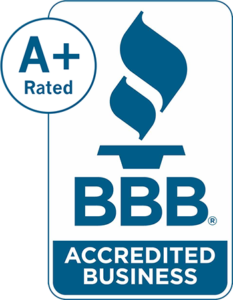Elevator systems, often taken for granted in modern buildings, are critical for vertical transportation. However, traditional elevator systems can be energy-intensive and inefficient. With advancements in technology and increasing energy efficiency standards, elevator modernization has become a key focus for building managers and owners aiming to reduce operational costs and environmental impact. This article explores how elevator modernization contributes to energy efficiency, the technologies involved, and the broader implications for sustainability in buildings.
Understanding Elevator Modernization
Elevator modernization involves upgrading or replacing outdated elevator components and systems to enhance performance, safety, and energy efficiency. The process typically includes updating drive systems, control systems, and cab interiors, among other components. Modernization can vary in scope from minor improvements to complete overhauls, depending on the age and condition of the existing system.
Key Technological Advances in Elevator Modernization
- Regenerative Drives: One of the most significant advancements is the introduction of regenerative drives. These drives capture the energy generated when the elevator descends and convert it into usable electricity. This recovered energy can be fed back into the building’s power grid or used to power other systems within the elevator, reducing overall energy consumption.
- LED Lighting: Replacing traditional incandescent or fluorescent lighting with LED lights in elevator cabins and hallways significantly reduces energy usage. LEDs consume less power and have a longer lifespan, which also reduces maintenance costs.
- Variable Voltage Variable Frequency (VVVF) Drives: VVVF drives enable more precise control of the elevator motor’s speed and torque. By adjusting the motor speed to match the elevator’s load and travel requirements, these drives reduce energy consumption and improve operational efficiency.
- Smart Control Systems: Modern elevator systems are equipped with intelligent control systems that optimize performance based on real-time data. These systems can manage elevator dispatching more efficiently, reducing wait times and unnecessary trips, which in turn conserves energy.
- Efficient Insulation and Materials: Modern elevator designs often incorporate better insulation and more energy-efficient materials. This not only improves the comfort of passengers but also reduces the amount of energy needed to maintain a comfortable environment within the elevator cabin.
Benefits of Elevator Modernization
- Reduced Energy Consumption: Upgrading to energy-efficient technologies can lead to a significant reduction in energy consumption. For example, regenerative drives can cut energy use by up to 30%, and LED lighting can reduce lighting energy consumption by up to 80% compared to traditional bulbs.
- Lower Operational Costs: Modern elevators typically require less maintenance and have lower operational costs. Improved efficiency and reduced wear and tear lead to fewer repairs and longer intervals between maintenance.
- Enhanced Building Sustainability: By reducing energy consumption and lowering greenhouse gas emissions, modernized elevators contribute to the overall sustainability of buildings. This is particularly relevant for buildings aiming to meet green building standards or achieve certifications such as LEED (Leadership in Energy and Environmental Design).
- Improved Passenger Experience: Modern elevators often offer smoother rides, quieter operation, and enhanced safety features, which improve the overall passenger experience. This can be particularly important in high-traffic buildings where elevator performance impacts user satisfaction.
Challenges and Considerations
While elevator modernization offers numerous benefits, it also presents challenges. The initial investment required for upgrading components can be significant. Building managers must weigh the long-term savings in energy and maintenance against the upfront costs. Additionally, modernization projects need to be carefully planned to minimize disruption to building occupants.
Elevator modernization is a critical step toward improving energy efficiency and sustainability in modern buildings. By incorporating advanced technologies such as regenerative drives, LED lighting, and smart control systems, building owners can achieve substantial reductions in energy consumption and operational costs. As technology continues to advance and energy efficiency standards become more stringent, the role of elevator modernization in creating sustainable and efficient buildings will only grow in importance.
Exclusive Elevator provides residential elevators for both new builds and retrofits. Contact us.






Leave A Comment